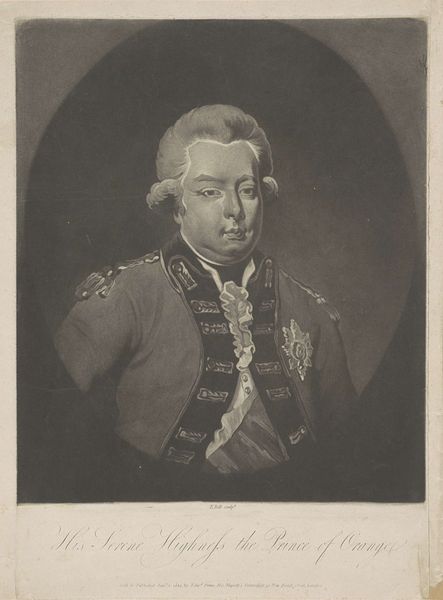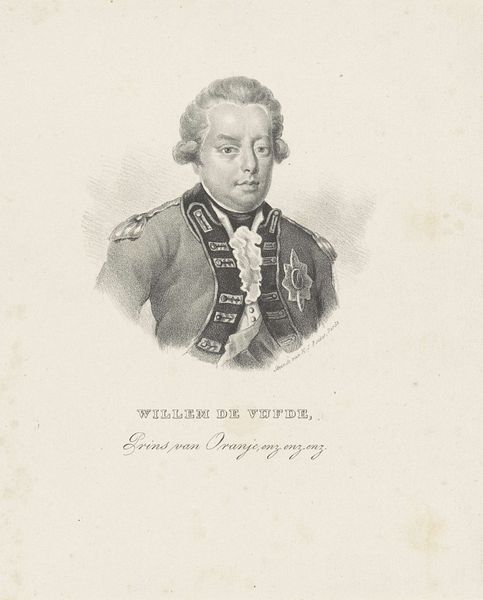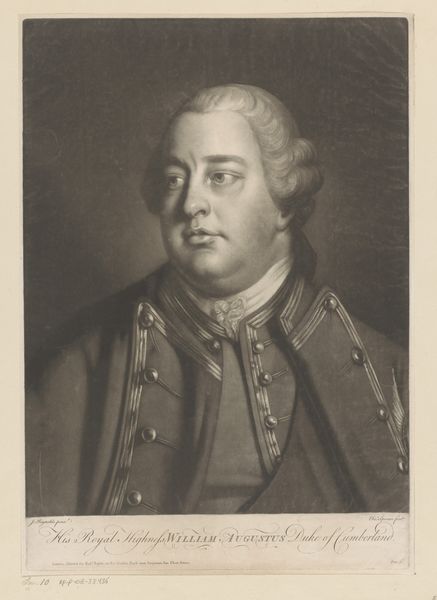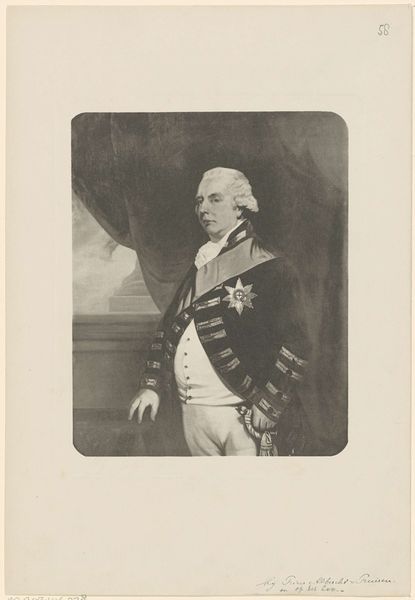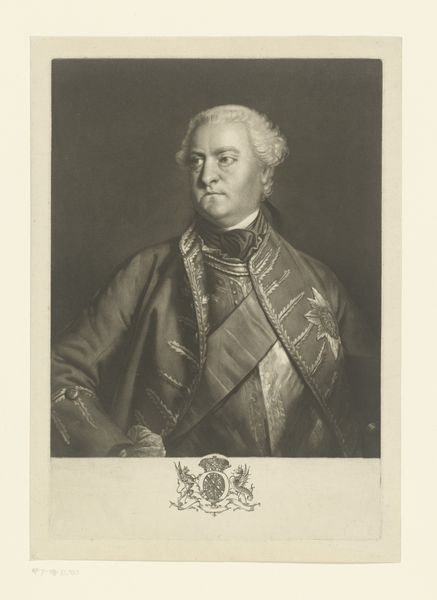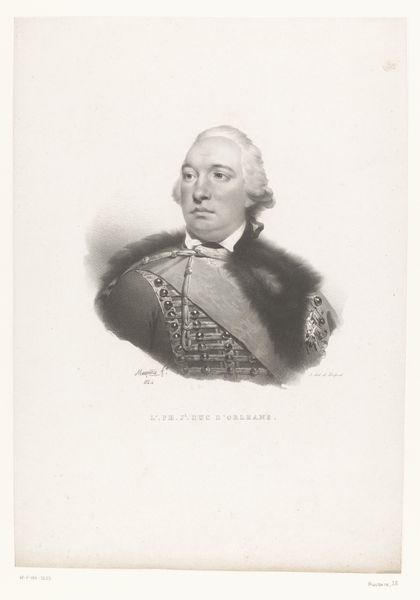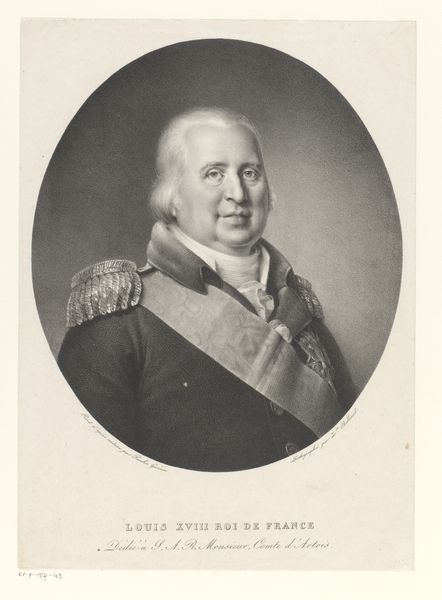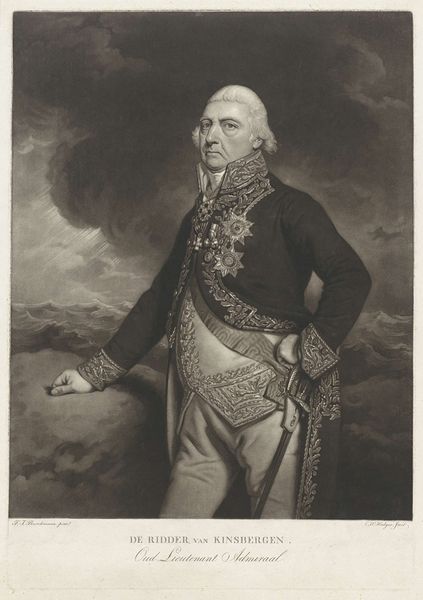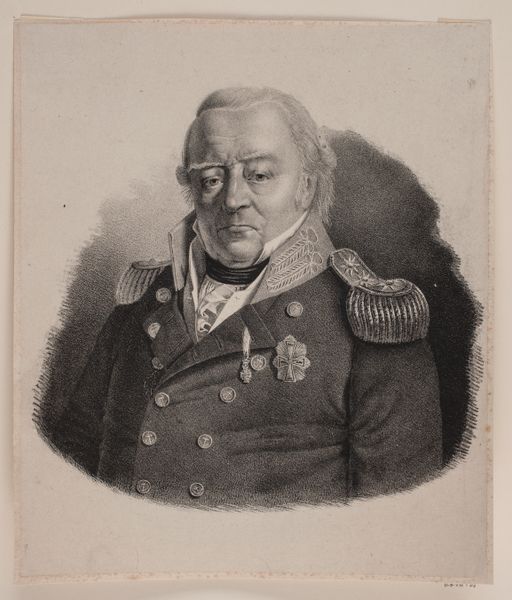
print, engraving
#
portrait
#
neoclacissism
# print
#
19th century
#
engraving
Dimensions: height 419 mm, width 302 mm
Copyright: Rijks Museum: Open Domain
Curator: Well, I find myself drawn to this engraving. "Portret van Willem V, prins van Oranje-Nassau", or Portrait of William V, Prince of Orange-Nassau, was rendered between 1783 and 1837, based on a design by Charles Howard Hodges. It presents the Prince in full regalia. Editor: It strikes me as rather severe, wouldn’t you agree? There is a definite formality and stoicism in the way William V is portrayed; his posture, that gaze. It reads as a constructed image of power during a tumultuous period. Curator: Absolutely. It is crucial to remember this is a print. Multiple impressions could be made and disseminated relatively widely. How intriguing to consider the production and consumption of such images. Who was purchasing this print? How were they using it? Editor: A point well taken! And it’s vital we examine it within the context of late 18th and early 19th century Europe, witnessing rising revolutionary sentiments. This image then is less a personal depiction, and more an instrument used for legitimization—projecting an image of stability amidst a changing world. Curator: That is a sharp reading, understanding images as a way to control specific outcomes in the world, in the era when images start circulating in a mass scale. The technique itself, this engraving—notice the precision. The careful cross-hatching builds up the tonal range. The very process of creating this print allows for careful control and replication of the prince’s image. Editor: Exactly! Look at the meticulous rendering of his clothing, the symbols of office, the very calculated inclusion of neoclassical elements in his attire and hair. All serving the goal of solidifying authority. Even the lack of any background focuses on him entirely and his persona. Curator: This engraving isn’t just a picture; it's evidence of how carefully crafted images played a pivotal role in projecting and maintaining power at a key turning point in European history. Editor: Yes. Reflecting on it, what stands out is that a work of art cannot and should not be examined separate from how it affected and influenced the identity of a population.
Comments
No comments
Be the first to comment and join the conversation on the ultimate creative platform.
